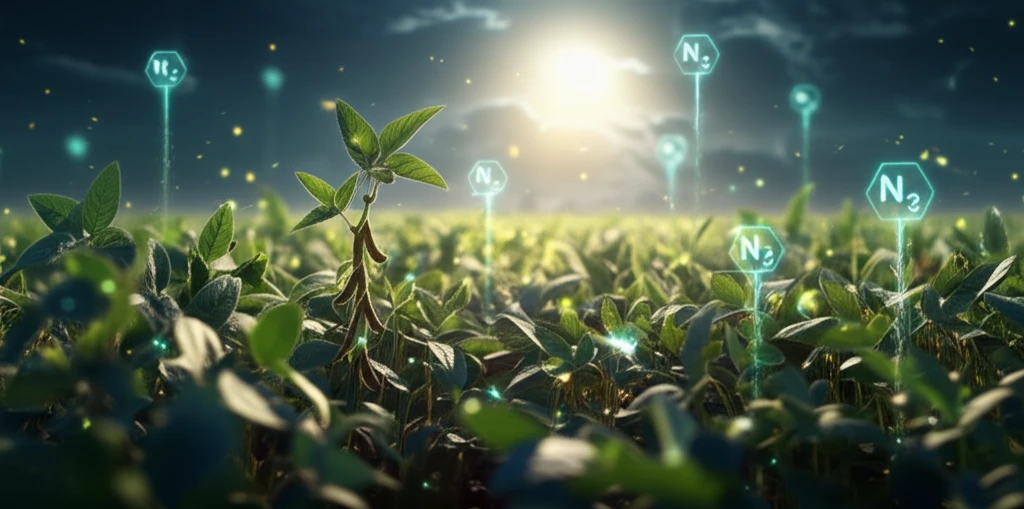
Unlocking Soybean Secrets: How Smarter Nitrogen Use Can Boost Your Yield
"Dive into the groundbreaking research that reveals the link between leaf nitrogen and soybean yield, and how it could revolutionize farming practices."
For years, scientists have been working hard to increase the amount of soybeans we can grow. Over the last 30 years, they've figured out better ways to manage the plants and made some genetic tweaks, leading to more productive crops. In fact, on average, soybean yields have gone up by about 31 kilograms per hectare each year in the United States.
One of the key areas of focus has been on improving the rate at which soybean plants can convert sunlight into energy through photosynthesis. This process is essential for plant growth and ultimately determines how much yield we get. However, soybeans have a bit of a challenge: they tend to break down proteins in their leaves to provide the necessary building blocks, called amino acids, to developing seeds. This can hinder photosynthesis and limit overall yield.
That's where nitrogen comes in. Nitrogen is a crucial element for plant growth and plays a vital role in photosynthesis. By understanding how leaf nitrogen levels affect soybean yield and how it interacts with other factors like nodulation (the formation of nitrogen-fixing nodules on roots), we can develop better strategies for breeding and managing soybean crops. This is especially important in major soybean-producing areas like Northeast China, where efforts to boost productivity are ongoing.
The Leaf Nitrogen Connection: How It Drives Soybean Success

Soybeans need a lot of nitrogen to grow and produce seeds, and this demand can sometimes limit how much they yield. The primary way soybeans get nitrogen is through a process called dinitrogen fixation, where they convert atmospheric nitrogen into a usable form. In some regions, like Brazil, soybeans get all their nitrogen from this process. In the United States, it accounts for 40 to 50% of the nitrogen in the plant.
- Selecting for plants that produce more seeds in nitrogen-deficient environments.
- Directly selecting for plants with larger nodule mass, increased acetylene reduction activity (a measure of nitrogen fixation), and higher levels of ureide content in their xylem (the plant's water-transporting tissue).
Boosting Soybean Production for a Sustainable Future
By focusing on leaf nitrogen status, we can unlock the potential for higher soybean yields and more sustainable farming practices. Improving nitrogen concentration and content in soybean leaves, enhancing nodulation, and breeding for nitrogen-efficient varieties are all promising avenues to explore. This research provides valuable insights for optimizing soybean production and ensuring a more secure and sustainable food supply.
